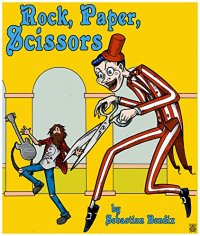Parenting a Child With Autism – Strategies, Therapies and Treatments
Being able to effectively guide the development of your autistic child requires a significant amount of work, and the parenting journey starts with a solid foundation of knowledge regarding the condition. From here, you can employ different strategies that work for your family and your child. It is our hope that this book can provide you with the information that you need to guide your child in the most effective way possible.
Grace Child, the author, writes in such a way that you won’t be wasting your time sifting through a bunch of useless content. You are going to get straightforward helpful tips to help you create a healthy and loving bond with your child that lasts a lifetime.
Here Are a Few Things From The Book Autism
Autism is actually a general term that covers a host of different disorders related to impaired brain development. These conditions are often observed in different degrees or types of difficulties (social, verbal, or nonverbal challenges). Previously, these disorders were recognized as respective and separate subtypes. However, the recent DSM-5 diagnostic manual has merged these disorders under the diagnosis of autism.
Though autism has a high degree of variability, this neurodevelopmental disorder generally follows a steady course; however, this course is one that has yet to have a definitive cure. Therefore, it’s important to know how ASD progresses in order to be able to help your child manage the condition effectively.
Though there is no complete cure for ASD, there are different treatment options available in order to help manage and improve the symptoms of the condition.
These include the following types of therapy and services:
- Early Intervention Services
- Applied Behavior Analysis (ABA)
- Developmental, Individual Differences, Relationship-Based Approach (DIR)
- Treatment and Education of Autistic and Communication-Handicapped Children (TEACCH)
- Occupational Therapy
- Sensory Integration Therapy
- Speech Therapy
- Picture Exchange Communication (PEC)
- Dietary Treatment
- Medication
Armed with the tools to cope with autism in your family, it’s now time to move on to developing different strategies you can employ in order to aid the development of your child. Creating a positive atmosphere in the home is necessary in order to complement what goes on in therapy or school, so it’s important that home life is in line with the therapeutic and treatment goals.
Here are some useful strategies you can adopt in order to achieve this much needed integration:
- Create A Safe Environment for Your Child
- Create A Routine & Schedule
- Use Different Audio or Visual Materials
- Set Rules
- Set Up A System For Reinforcement
- Try to Avoid Overwhelming Stimuli
- Try To Outlets for Excess Energy
- Conduct Calming Exercises
- Adjust Your Child’s Diet
- Breakdown Each Transition
- Rehearse Stressful Situations
- Set Daily Goals and Plans
- Don’t Forget About Nonverbal Communication
- Distinguish Between What Your Child Can’t Do and Won’t Do
As you can see this book will give you all you need to effectively help your child with Autism to develop to their full potential. Parenting a child is a difficult journey, and adding ASD into the equation can make it even more challenging. However, ASD can be managed with the right attitude and the right strategies in play.
Tags: autism, parenting an autistic child, autism spectrum disorder, asd, autism treatments and therapies, autistic, what is autism, autism symptoms, learning disabil













